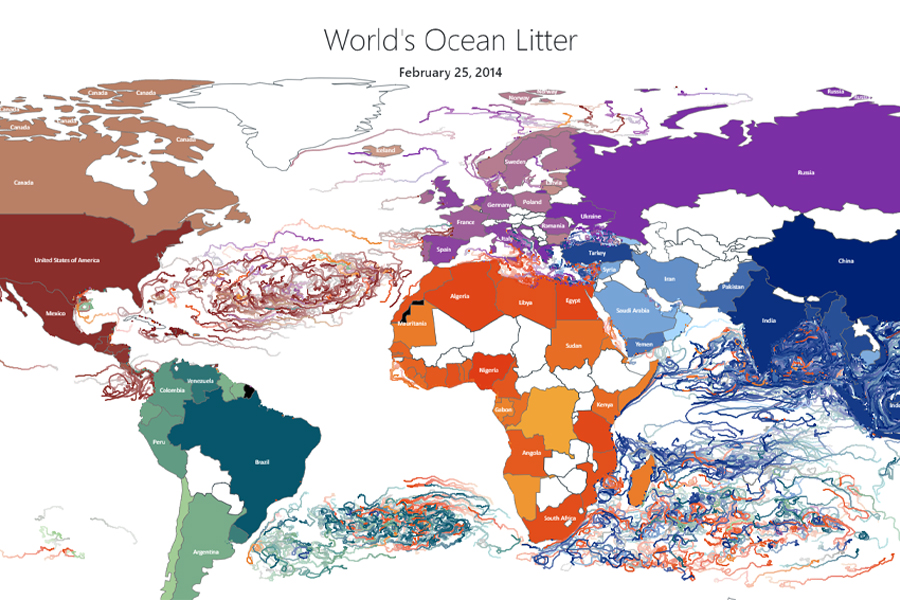FSU researchers develop tool to track marine litter polluting the ocean

TALLAHASSEE, Fla. — In an effort to fight the millions of tons of marine litter floating in the ocean, Florida State University researchers have developed a new virtual tool to track this debris.
Their work, which was published in Frontiers in Marine Science, will help provide answers to help monitor and deal with the problem of marine litter.
“Marine litter is found around the world, and we do not fully understand its impact on the ocean ecosystem or human health,” said Eric Chassignet, director of FSU’s Center for Ocean-Atmospheric Prediction Studies (COAPS) and the paper’s lead author. “That’s why it’s important to learn more about this problem and develop effective ways to mitigate it.”
Marine litter is a big problem for the Earth’s oceans. Animals can get entangled in debris. Scientists have found tiny pieces of plastic inside fish, turtles and birds — litter that blocks digestive tracts and alters feeding behavior, altering growth and reproduction. Most of that marine litter is mismanaged plastic waste, which is of particular concern because plastics remain in the ocean for a long time.
Understanding where marine litter goes once it’s in the ocean is a big part of understanding the issue and helping individual countries and the international community to develop plans to deal with the problem. The United Nations, which funded this work, is trying to mitigate the impact of mismanaged plastic waste, and this work can inform their policies and regulations.
Take the so-called Great Pacific Garbage Patch, a cluster of marine debris in the Pacific Ocean, for example. Tracking marine litter will help answer questions about whether it is growing larger and questions about how much plastic is breaking down or sinking to the bottom of the ocean. The virtual tool also shows how countries around the world are connected.
“Knowing where the marine litter released into the ocean by a given country goes and the origin of the litter found on the coastline of a given country are important pieces of information for policymakers,” Chassignet said. “For example, it can help policymakers determine where to focus their efforts for dealing with this problem.”
The tracking tool uses worldwide mismanaged plastic waste data as inputs for its model. The model uses data about ocean and air currents to track marine debris starting from 2010. Fire up the website and you can watch as colorful lines swirl across the Earth’s oceans. It looks pretty — until you realize it is tracking litter.
COAPS — an interdisciplinary research center focusing on air-sea interaction, the ocean-atmosphere-land-ice earth system and climate prediction — is 25 years old this year. Researchers at the center uses sophisticated ocean models to map the ocean and predict ocean currents that help scientists understand where marine litter released in the ocean is likely to travel and end its journey.
“If you have data for the past 20 years, a lot can be done in terms of modeling and simulations,” Chassignet said.
COAPS researchers Xiaobiao Xu and Olmo Zavala-Romero were co-authors on this paper.
This work was supported by the United Nations Environment Programme.

